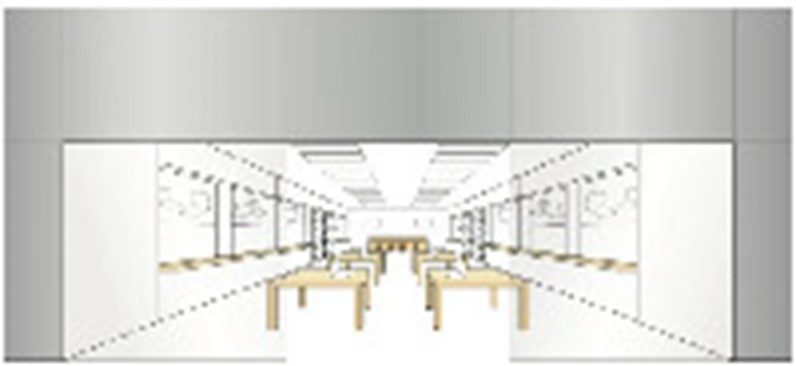Marketing through architectural brand – Museum Katowice
The case: The Silesian Industrial Museum in Katowice, widely known in Poland, is a symbol of industrial development. It is described in travel guides, can be found in architectural catalogues, has received national and international awards for architecture and spatial planning, and is coveted as an advertising theme by well-known companies. A logical next step for the museum was to seek protection as an architectural brand to better secure this image for its products and services.
Hence the museum applied to register its entire complex as a European figurative mark for a variety of goods and services:

The museum had not expected to encounter issues with its registration; the European Court of Justice had already accepted the Apple flagship stores as a three-dimensional trademark, namely for retail services in relation to computers, computer software, computer peripherals, mobile phones, consumer electronics and corresponding accessories, as well as for the demonstration of the corresponding products:

And the Narodowy football stadium in Warsaw was also registered as a European figurative mark; as was the standard petrol station of the Finnish company Neste Oyj, as a three-dimensional mark:

But was the image of the Katowice museum complex distinctive enough to be registered as a trademark? A trademark is distinctive if the consumer takes from it an indication of the commercial origin of the trade-marked goods or services.
The trademark applied for here contained the representation of the museum complex. In such a sign, the consumer would initially see only an indication of the buildings depicted. However, if such a complex of buildings deviates significantly from the norm or custom in the economic sector in question, it may convey to the consumer an indication of the commercial origin of goods or services. In this respect, the registration of a sign as a trademark would not depend on a finding of a certain degree of creativity or artistic imagination. Nevertheless, the sign must be distinctive.
However, according to the EUIPO Board of Appeal, the architecture of the museum did not deviate significantly from the norm, as required for protectability. The design of the buildings and the ground plans of the museum complex had many varied elements. Despite its visible mineshaft, the complex as a whole did not deviate from the modern architectural appearance of a former mine, factory or other industrial site. Therefore, the Board of Appeal found that the museum complex could not be protected as a trademark.
However, because the lower operations department of the EUIPO had seen things differently, it also had to address the question as to whether the sign could be registrable as a trademark in relation to certain goods and services, and if so, which ones.
Like any other sign, an architectural sign that is protectable per se must not be directly descriptive of the nature of the goods or services claimed or of their essential characteristics. Consequently, the representation of architecture must not contain any direct indication that the goods applied for are connected with the building or building complex represented. In relation to services, the sign must not contain any indication that the sign merely depicts the place where the services in question are provided or with which the services are directly connected.
On this basis, not even a building complex protectable as a sign per se would be registrable as a trademark for goods or services to which it relates. Examples of such services/goods include publications, computer programs, multimedia publications, games, educational software, books, watercolours, and the sale, rental or management of real estate – as well as the organisation or operation of exhibitions and trade fairs and hotel management. In the case of these goods and services, the consumer would only see the characteristics of the products and services in the sign, not the indication of a specific company.
In contrast, the image of a building complex that is protectable per se would be registrable as a trademark for goods and services to which the sign does not have such a direct descriptive connection. This has been assumed for data carriers; jewellery, keyrings; watches; office supplies or T-shirts, as well as insurance and financial services and advertising. Even in relation to the service of retailing publications, computer programs, multimedia publications, games, educational software, books or watercolours, etc., the sign would be eligible for protection. The fact that the architectural sign could not be protected for the products themselves is irrelevant. This is because the aforementioned products are not an integral part of the sale of these goods themselves.
Since the Board of Appeal was seised of the case only to the extent that the examining division refused the trademark application, the building complex is registered as an EU trademark for the goods and services which it does not describe.
EUIPO, DECISION of the First Board of Appeal of 12 May 2020, R 2569/2019-1
Learnings: If you want to secure the marketing opportunity afforded by your company’s individual architecture by means of a trademark, you should ascertain whether the architecture deviates significantly from the norm or customs in the economic sector described by the goods and services envisaged. The sign must be capable of distinguishing these goods and services from those of other companies. If this is the case, you have a good chance of obtaining trademark protection for such goods or services for which the representation of the architecture does not constitute a direct description of the nature or essential characteristics of the goods or services applied for.